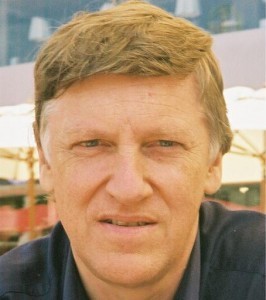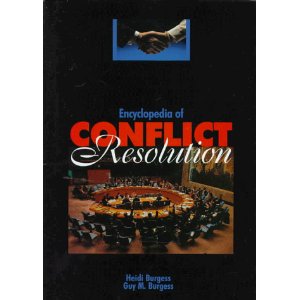
Al Qaeda’s Network in Iran (per German trial)
DoD finalizing rules of engagement for cyber attacks
George Clooney's satellite spies reveal secrets of Sudan's bloody army
Lockerbie Report Slams Courts for Multiple Failures
Search as is:
2008 Rebalancing the Instruments of National Power (Full Text Online for Google Translate)
My Talk With Tom Atlee: Primer on Citizen Intelligence
Human in the Loop Result:
Search: Strategic Analytic Model
Phi Beta Iota: No one does this correctly for multiple reasons. Tracking dollar inputs or dollar outputs is virtually useless as a means of achieving outcomes, and often the agencies and departments do not even have desired outcomes, just low-rent budget share agreements. To get this right you need:
a) True cost information spanning the full spectrum of threats, policies, and options
b) A national strategy centered on the public interest, not the private interests that now own the government
c) Intelligence with integrity in the development of coherent Whole of Government campaign plans — this especially demands an end to government loopholes, subsidies, earmarks, and other forms of corrupt micro-management and administrative law that serve only to force more political money into play
d) Honest accounting including a commitment to zero inflation and no myths about the future
e) An Office of Management and Budget that can actually Manage, not just Budget
See Also:
Continue reading “Search: strategic modeling for government spending”

Huh?
Tungsten-Filled 1 Kilo Gold Bar Found In The UK
The last time a story of Tungsten-filled gold appeared on the scene was just two years ago, and involved a 500 gram bar of gold full of tungsten, at the W.C. Heraeus foundry, the world’s largest metal refiner and fabricator. It also became known that said “gold” bar originated from an unnamed bank.
It is now time to rekindle the Tungsten Spirits with a report from ABC Bullion of Australia, which provides photographic evidence of a new gold bar that has been drilled out and filled with tungsten rods, this time not in Germany but in an unnamed city in the UK, where it was intercepted by a scrap metals dealer, and was supplied with its original certificate. The reason the bar attracted attention is that it was 2 grams underweight.

Upon cropping it was uncovered that about 30-40% of the bar weight was tungsten. So two documented incidents in two years: isolated? Or indication of the same phenomonenon of precious metal debasement that marked the declining phase of the Roman empire. Only then it was relatively public for anyone who cared to find out on their own. Now, with the bulk of popular physical gold held in top secret, private warehouses around the world, where it allegedly backs the balance sheets of the world’s central banks, yet nobody can confirm its existence, nor audit the actual gold content, it is understandable why increasingly more are wondering: just how much gold is there? And alongside that – while gold, (or is it GLD?), can be rehypothecated, can one do the same with tungsten?
Phi Beta Iota: The value of the missing gold in this very small bar is on the order of $15,000 to $20,000. In larger bars such as New York Bank is suspected of systematically diluting, the value would be a double order of magnitude.
All signs point toward a massive financial collapse in the USA immediately following the November 2012 elections. If either of the two corrupt political parties staff the White House, the USA is toast. We desperately need electoral reform in time for November 2012, an honest coalition cabinet, and a crowd-sourced balanced budget such as recommended by We the People Reform Coalition. Both China and Germany are auditing gold; the integrity of the Federal Reserve and especially the New York Bank are in the toilet.
See Also:

Aki Peritz and Eric Rosenbach
Spectator (UK) Book Club, 24 March 2012
Eric Rosenbach is a former academic who is now deputy assistant secretary of defence in Washington. Aki Peritz used to work for the CIA and now advises the Third Way think tank. Their book, therefore, is not a breathless account of terrorist-hunting nor the sensational inside story of how, in Obama’s words, ‘We got him’ (bin Laden). Rather, it is an exposition of legal, bureaucratic, political and military developments within the US following 9/11, illustrated by summaries of how various terrorists were killed or captured. If you want thrills and spills, go elsewhere, but if you are a student of counter-terrorism or are interested in the legal limbo of rendition, detention and targeted killings, you should probably read it.
The title refers to the process of finding terrorists — establishing who they are — then fixing their whereabouts, then finishing them off. The first two are generally intelligence tasks, the last military, and for the process to work it requires careful co-ordination. This may seem obvious but it wasn’t always so; the book usefully catalogues missed opportunities pre-9/11 for killing or capturing bin Laden and other leading terrorists. It also points out that there were around 70 renditions — US seizures of wanted terrorists from third countries with the agreement of host governments — before 9/11, under Clinton. ‘Extraordinary renditions’ are seizures without the consent of the host, most if not all of which have taken place post-9/11.

Huh?
Flash Points: An inside look into Osama bin Laden documents
Christine Delargy, Jacqueline CorbaFlashpoints, 22 March 2012
CBS News senior national security analyst Juan Zarate sat down with CBS News national security correspondent Bob Orr on this week's episode of Flash Points to discuss his recent briefing on the documents taken from Osama bin Laden's compound in Abbottabad, Pakistan.
“What was clear from what I was briefed on throughout the documents was the fact that he is losing control of the movement,” said Zarate, who served as a top national security aide to President George W. Bush.
“He is still trying to drive the strategy but he's meeting with the realities of the environment, not only are they beleaguered and battered by counter terrorism pressure over the past few years, but they are not able to function in the way they once did,” Zarate said.
Zarate added that he received an intriguing look inside the strategic tension between Bin Laden and Ayman al-Zawahiri, and gave an example of a conversation that may have taken place between the two, where Bin Laden argues, “no brother let's stay focused on what matters, let's cut down the tree at the trunk and the trunk is America, keep attacking America.”
Watch the rest of Zarate's analysis, including his take on Bin Laden's opinions of Yemen and Somalia, in the video above.
Follow Juan Zarate on Twitter for more national security updates and to suggest what you would like to see in the upcoming episodes of “Flash Points.”
Phi Beta Iota: This is insane. We've known that reporters have been lipstick on the media advertising pig for a very long time, but we are increasingly realizing they simply do not know anything — no history, no past reading, no continuity of cognizance. David Ignatius is another matter — he is a long-term “asset of convenience.” These puppies have no foundation for evaluating anything — they are being fed horse manure.
See Also:
Mini-Me: David Ignatius on the CIA’s “Captured” Abbottabad Files
Bin Laden Show: Entries 01-79 UPDATED 9 March 2012
Worth a Look: Book Reviews on Intelligence (Most)

I picked this book up as a used library book, and should have spent time with it sooner. It was published in 1997. It is still relevant today. Although I list ten other related works below, I cannot find anything exactly like this, so if you have an interest in this area, this is still a valuable book.
The best thing I can say about this book is that I would value it's being brought up to date and re-issued. The next best thing is that I love the readable print and lay-out. This is NOT a “fine print” encyclopedia. Each page has two columns, entries run from very short to several two-column pages.
The authors made it a point to integrate a variety of reference sections including organizations, authors, and books related to conflict resolution. I should say that this encyclopedia covers “full spectrum” conflict resolution from domestic violence all the way to world war.
I treasure books, and many books today annoy me with their silly colors, gaudy covers, and very small print. This book is a “classic” in perfect form, a real pleasure to use. I would venture to say that if and when it is updated and re-issued, this 1997 version will still be of high value as a benchmark. Now that we are into everything from neuro-economic to neuro-pyschology, I don't imagine we are too far from neuro-peacekeeping based on transparency, truth, and trust (instead of secrets, lies, and violence).
See Also:
Encyclopedia of Violence, Peace, and Conflict, Three-Volume Set (v. 1-3)
The Encyclopedia of Peace Psychology
Encyclopedia of Peace Education (PB)
The International Encyclopedia of Revolution and Protest: 1500 to the Present
The Oxford International Encyclopedia of Peace: Four-volume set
These books I have reviewed, and I also provide at the end the words for finding my two master lists of book reviews I did in support of my last book as well as my next one.
Nonzero: The Logic of Human Destiny
The Tao of Democracy: Using co-intelligence to create a world that works for all
Conscious Evolution: Awakening Our Social Potential
Society's Breakthrough!: Releasing Essential Wisdom and Virtue in All the People
Integral Consciousness and the Future of Evolution
My master lists (use any search engine):
Worth a Look: Book Review Lists (Positive)
Worth a Look: Book Review Lists (Negative)


How al-Qaeda tried to control the media
THE David Ignatius
Washington Post, 20 March 2012
Among the last known images of Osama bin Laden is a video seized at his compound the night he was killed, which shows the al-Qaeda leader hunched before a television screen studying a video of himself. It’s testimony to bin Laden’s obsession with the media side of his war against the United States.
This modern face of bin Laden’s jihad comes through clearly in a 21-page letter from his media adviser, a U.S.-born jihadist named Adam Gadahn. The letter is undated, but it appears to have been written after November 2010, in the last six months of bin Laden’s life.
Gadahn wrote much as if he were a media planner corresponding with a client. He included suggestions about the timing of video appearances after the 2010 U.S. midterm elections and use of high-definition video, and made snarky evaluations of major U.S. networks.
As I wrote last week, Gadahn hated Fox News (“falls into the abyss”); he liked MSNBC but complained about the firing of Keith Olbermann; he had mixed feelings about CNN (better in Arabic than in English) and made flattering comments about CBS and ABC. Basically, he wanted to play them all off to al-Qaeda’s best advantage. He also mentioned print journalists, most prominently Robert Fisk of The Independent of Britain. He cites three Americans (“Brian Russ,” “Simon Hirsh” and “Jerry Van Dyke”), though it’s uncertain whom he meant.
The media guidance was among the documents taken from bin Laden’s compound the night of May 2. It was made available to me, along with a small sample of other documents in the cache, by a senior Obama administration official.
Gadahn’s memo shows an organization struggling to stay on the media offensive despite devastating U.S. attacks. It’s partly aspirational, with dreams of jihad, but there’s a core of sharp self-criticism that makes clear Gadahn, like his boss, understood that al-Qaeda was losing its war.
Gadahn even worried that al-Qaeda’s reversals in Iraq and elsewhere represented “punishment by God on us because of our sins and injustices.” Like bin Laden, he was deeply upset that al-Qaeda’s affiliates had killed so many Muslims and listed 13 operations that showed “the tragedy of tolerating the spilling of [Muslim] blood.”
Gadahn is an intriguing figure whose life story would seem far-fetched if sketched by a Hollywood screenwriter. He was born Adam Pearlman in 1978, grandson of a California doctor who had served on the board of the Jewish Anti-Defamation League. Gadahn converted to Islam when he was 17, migrated to Pakistan at 20 and then disappeared in March 2001 into al-Qaeda’s world. In 2006, he was indicted by the United States for treason.
Phi Beta Iota: This gets sillier and sillier – including the built-in throw-away lines to explain what is probably typically ignorant US “covert operations” fiction. Most likely possibility at this point: young Adam was recruited early as a Mossad sleeper agent in the USA, and sent toward jihad generally. However, if Al Qaeda was in any way a fully-funded CIA/Safari Club operation as some claim (hybrid opportunist cross-over is more likely) then Adam could have been one of the few truly deep case officers developed or a joint Mossad/CIA puppy. We tend to doubt this “evidence.” Ignatius has zero credibility with us. At this point, anything he claims to accept is in our judgment false flag across the board and an illegal covert action / propaganda operations against the U.S. public. Ignatius is not ignorant — he is polished, professional, and deeply read. This is an ethics issue.